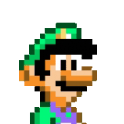-
Recently Browsing 0 members
- No registered users viewing this page.
-
Similar Content
-
KDE Plasma prepares crackdown on focus-stealing window behavior under Wayland
By David Uzondu,
- kde
- kde plasma
- (and 5 more)
- 2 replies
- 0 views
-
Amid Windows 11 data loss fears, Ubuntu tests new feature that Windows users will want
By hellowalkman,
- 4 replies
- 0 views
-
- 0 replies
- 0 views
-
Latest Steam Proton beta adds support for new games on Linux, includes multiple bug fixes
By David Uzondu,
- 2 replies
- 0 views
-
- 21 replies
- 0 views
-














Recommended Posts